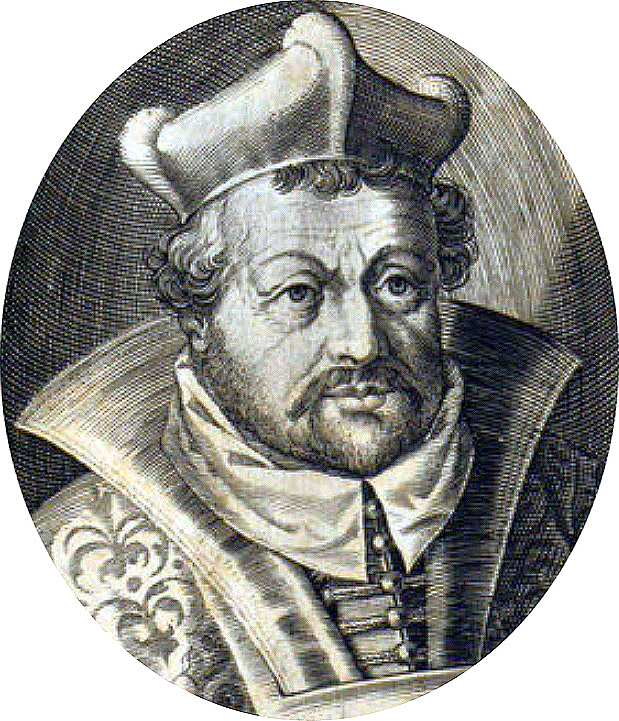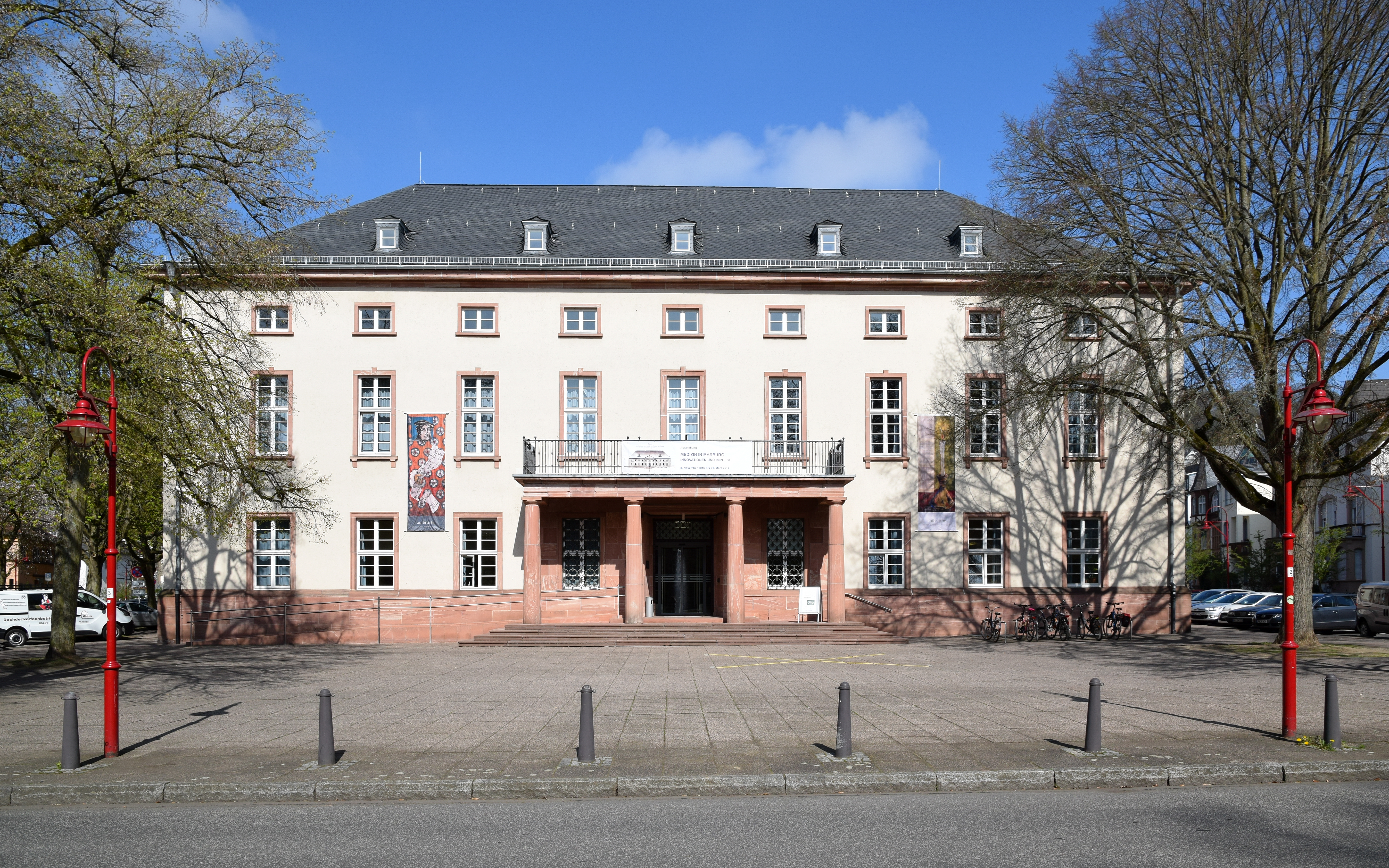|
Merga Bien
Merga Bien (late 1560s – 1603) was a German woman convicted of witchcraft and perhaps the most famous of the victims in the Fulda witch trials in 1603–05. Life Bien was born in the city of Fulda. She was married three times and was the heiress of her first two husbands, which later played an important part in accusations. In 1588, she married Blasius Bien and moved from the city, but, fatefully, returned after a conflict with her husband's employers. At the time, prince abbot Balthasar von Dernbach, who had returned to power in 1602 after a long exile, ordered an investigation of witchcraft in the city. Over two hundred people were executed for witchcraft in witch trials that lasted until his death in 1605. In March 1603, the investigations resulted in the first wave of arrests in the city. On 19 June, Merga was arrested and put in jail. Her husband protested before the Reichskammergericht in Speyer and pointed out that she was pregnant. In jail, she was forced to confess ... [...More Info...] [...Related Items...] OR: [Wikipedia] [Google] [Baidu] |
Fulda Hexenturm Von SO
Fulda () (historically in English called Fuld) is a town in Hesse, Germany; it is located on the river Fulda and is the administrative seat of the Fulda district (''Kreis''). In 1990, the town hosted the 30th Hessentag state festival. History Middle Ages In 744 Saint Sturm, a disciple of Saint Boniface, founded the Benedictine monastery of Fulda as one of Boniface's outposts in the reorganization of the church in Germany. It later served as a base from which missionaries could accompany Charlemagne's armies in their political and military campaigns to fully conquer and convert pagan Saxony. The initial grant for the abbey was signed by Carloman, Mayor of the Palace in Austrasia (in office 741–47), the son of Charles Martel. The support of the Mayors of the Palace, and later of the early Pippinid and Carolingian rulers, was important to Boniface's success. Fulda also received support from many of the leading families of the Carolingian world. Sturm, whose tenure ... [...More Info...] [...Related Items...] OR: [Wikipedia] [Google] [Baidu] |
Witchcraft
Witchcraft traditionally means the use of magic or supernatural powers to harm others. A practitioner is a witch. In medieval and early modern Europe, where the term originated, accused witches were usually women who were believed to have used malevolent magic against their own community, and often to have communed with evil beings. It was thought witchcraft could be thwarted by protective magic or counter-magic, which could be provided by cunning folk or folk healers. Suspected witches were also intimidated, banished, attacked or killed. Often they would be formally prosecuted and punished, if found guilty or simply believed to be guilty. European witch-hunts and witch trials in the early modern period led to tens of thousands of executions. In some regions, many of those accused of witchcraft were folk healers or midwives. European belief in witchcraft gradually dwindled during and after the Age of Enlightenment. Contemporary cultures that believe in magic and the s ... [...More Info...] [...Related Items...] OR: [Wikipedia] [Google] [Baidu] |
Fulda Witch Trials
The Witch trials of Fulda in Germany from 1603 to 1606 resulted in the death of about 250 people. They were one of the four largest witch trials in Germany, along with the Trier witch trials, the Würzburg witch trial, and the Bamberg witch trials. Midelfort, H. C. Erik, Witch-hunting in southwestern Germany 1562-1684: the social and intellectual foundations, U.P, Stanford, Calif, 1972 The persecutions were ordered by the Catholic Prince Bishop, a follower of the Counter-Reformation. Crypto-protestants were executed on charges of witchcraft.Stuart Clark, William Monter, Witchcraft and Magic in Europe, Volume 4: The Period of the Witch Trials' History The witch trials were ordered by Prince-abbot Balthasar von Dernbach, who had been exiled by the Lutherans in 1576 after his Counter-Reformation policies, and returned to power in 1602. He resumed the Counter-Reformation, and announced an investigation of witches and other undesirables. The witchcraft persecutions were preside ... [...More Info...] [...Related Items...] OR: [Wikipedia] [Google] [Baidu] |
Fulda
Fulda () (historically in English called Fuld) is a town in Hesse, Germany; it is located on the river Fulda and is the administrative seat of the Fulda district (''Kreis''). In 1990, the town hosted the 30th Hessentag state festival. History Middle Ages In 744 Saint Sturm, a disciple of Saint Boniface, founded the Benedictine monastery of Fulda as one of Boniface's outposts in the reorganization of the church in Germany. It later served as a base from which missionaries could accompany Charlemagne's armies in their political and military campaigns to fully conquer and convert pagan Saxony. The initial grant for the abbey was signed by Carloman, Mayor of the Palace in Austrasia (in office 741–47), the son of Charles Martel. The support of the Mayors of the Palace, and later of the early Pippinid and Carolingian rulers, was important to Boniface's success. Fulda also received support from many of the leading families of the Carolingian world. Sturm, whose tenure ... [...More Info...] [...Related Items...] OR: [Wikipedia] [Google] [Baidu] |
Balthasar Von Dernbach
Balthasar von Dernbach (1548 – 15 March 1606), was a Benedictine monk of Fulda monastery and its Prince-Abbot from 1570 to 1606. Family Balthasar was born into a branch (''called Graul'') of the ''von Dernbach'' family, a family of knights traceable to the 13th century in the vicinity of Giessen and Herborn as liegemen of the landgraves of Hesse. Born in 1548 in Wiesenfeld, Hesse, Balthasar was the youngest son of the fifteen children of Peter von Dernbach and his wife, Clara Klauer von und zu Wohra. Balthasar was baptized into the Lutheran church, although his father's religious leanings have been described as either "staunchly Lutheran" and the "only Catholic" in Hesse. A liegeman of Philip I, Landgrave of Hesse, Peter von Dernbach fought in the Schmalkaldic War of 1546/47 despite adopting a critical attitude towards Philip's religious policies. Fulda monastery When Balthasar's father died in 1560, his mother sent the 12-year-old youth to Fulda monastery, where her brothe ... [...More Info...] [...Related Items...] OR: [Wikipedia] [Google] [Baidu] |
Reichskammergericht
The ''Reichskammergericht'' (; ; la, Iudicium imperii) was one of the two highest judicial institutions in the Holy Roman Empire, the other one being the Aulic Council in Vienna. It was founded in 1495 by the Imperial Diet in Worms. All legal proceedings in the Holy Roman Empire could be brought to the Imperial Chamber Court, except if the ruler of the territory had a so-called '' privilegium de non appellando'', in which case the highest judicial institution was found by the ruler of that territory. Another exception was criminal law in which the Imperial Chamber Court could intervene only if basic procedural rules had been violated. The Imperial Chamber Court was infamous for the long time that it took to reach a verdict. Some proceedings, especially in lawsuits between different states of the Empire, took several hundred years. Some of the lawsuits had not been brought to an end when it was dissolved in 1806 following the downfall of the Holy Roman Empire. However, it has ... [...More Info...] [...Related Items...] OR: [Wikipedia] [Google] [Baidu] |
Speyer
Speyer (, older spelling ''Speier'', French: ''Spire,'' historical English: ''Spires''; pfl, Schbaija) is a city in Rhineland-Palatinate in Germany with approximately 50,000 inhabitants. Located on the left bank of the river Rhine, Speyer lies south of Ludwigshafen and Mannheim, and south-west of Heidelberg. Founded by the Romans, it is one of Germany's oldest cities. Speyer Cathedral, a number of other churches, and the Altpörtel (''old gate'') dominate the Speyer landscape. In the cathedral, beneath the high altar, are the tombs of eight Holy Roman Emperors and German kings. The city is famous for the 1529 Protestation at Speyer. One of the ShUM-cities which formed the cultural center of Jewish life in Europe during the Middle Ages, Speyer and its Jewish courtyard was inscribed on the UNESCO World Heritage List in 2021. History The first known names were ''Noviomagus'' and ''Civitas Nemetum'', after the Teutonic tribe, Nemetes, settled in the area. The nam ... [...More Info...] [...Related Items...] OR: [Wikipedia] [Google] [Baidu] |
Hessisches Staatsarchiv Marburg
The Hessisches Staatsarchiv Marburg (HStAM, "Hessian State Archives in Marburg") is one of the three archives of the Hessisches Landesarchiv and is based in Marburg upon Lahn. References Marburg Hessian StateArchives Marburg Marburg Hessian StateArchives {{Germany-stub ... [...More Info...] [...Related Items...] OR: [Wikipedia] [Google] [Baidu] |
1560s Births
Year 156 ( CLVI) was a leap year starting on Wednesday (link will display the full calendar) of the Julian calendar. At the time, it was known as the Year of the Consulship of Silvanus and Augurinus (or, less frequently, year 909 ''Ab urbe condita''). The denomination 156 for this year has been used since the early medieval period, when the Anno Domini calendar era became the prevalent method in Europe for naming years. Events By place America * The La Mojarra Stela 1 is produced in Mesoamerica. By topic Religion * The heresiarch Montanus first appears in Ardaban (Mysia). Births * Dong Zhao, Chinese official and minister (d. 236) * Ling of Han, Chinese emperor of the Han Dynasty (d. 189) * Pontianus of Spoleto, Christian martyr and saint (d. 175) * Zhang Zhao, Chinese general and politician (d. 236) * Zhu Zhi, Chinese general and politician (d. 224) Deaths * Marcus Gavius Maximus, Roman praetorian prefect * Zhang Daoling, Chinese Taoist Taoism ( ... [...More Info...] [...Related Items...] OR: [Wikipedia] [Google] [Baidu] |
1603 Deaths
Sixteen or 16 may refer to: * 16 (number), the natural number following 15 and preceding 17 *one of the years 16 BC, AD 16, 1916, 2016 Films * ''Pathinaaru'' or ''Sixteen'', a 2010 Tamil film * ''Sixteen'' (1943 film), a 1943 Argentine film directed by Carlos Hugo Christensen * ''Sixteen'' (2013 Indian film), a 2013 Hindi film * ''Sixteen'' (2013 British film), a 2013 British film by director Rob Brown Music *The Sixteen, an English choir *16 (band), a sludge metal band * Sixteen (Polish band), a Polish band Albums * ''16'' (Robin album), a 2014 album by Robin * 16 (Madhouse album), a 1987 album by Madhouse * ''Sixteen'' (album), a 1983 album by Stacy Lattisaw *''Sixteen'' , a 2005 album by Shook Ones * ''16'', a 2020 album by Wejdene Songs * "16" (Sneaky Sound System song), 2009 * "Sixteen" (Thomas Rhett song), 2017 * "Sixteen" (Ellie Goulding song), 2019 *"16", by Craig David from '' Following My Intuition'', 2016 *"16", by Green Day from ''39/Smooth'', 1990 *"16", ... [...More Info...] [...Related Items...] OR: [Wikipedia] [Google] [Baidu] |
People Executed For Witchcraft
A person ( : people) is a being that has certain capacities or attributes such as reason, morality, consciousness or self-consciousness, and being a part of a culturally established form of social relations such as kinship, ownership of property, or legal responsibility. The defining features of personhood and, consequently, what makes a person count as a person, differ widely among cultures and contexts. In addition to the question of personhood, of what makes a being count as a person to begin with, there are further questions about personal identity and self: both about what makes any particular person that particular person instead of another, and about what makes a person at one time the same person as they were or will be at another time despite any intervening changes. The plural form "people" is often used to refer to an entire nation or ethnic group (as in "a people"), and this was the original meaning of the word; it subsequently acquired its use as a plural form of per ... [...More Info...] [...Related Items...] OR: [Wikipedia] [Google] [Baidu] |






_1938.jpg)